In the world of product design and software development, the MVP, or minimum viable product, is booming as a cornerstone concept. MVP software development is a process that requires basic, most important features to build any website or application so that individuals can utilize the product. This technique lets us get user feedback while maintaining the low development cost.
This comprehensive guide will elaborate on everything regarding the MVP from the basic level to the advanced. It will include various concepts, such as introduction, benefits, how to build, and much more. Whether you are a beginner or have basic knowledge, this blog will help you thoroughly.
Understanding MVP Software Development
An MVP is a product’s primary version that has only the needed features required to satisfy early users or adopters. Moreover, this allows them to provide feedback, which can guide future product development. The primary goal is to help developers potentially avoid unnecessary and time-consuming work. Instead, they enhance their working versions and employ feedback to test and confirm the product’s needs.
If we talk about minimum viable product software development, entrepreneurs use it to test whether their product idea is feasible. However, this procedure aids in understanding whether the idea would actually be profitable.
Features of MVP Software
MVP software development offers several characteristics that would be worthwhile for you before moving ahead.
- Quick Development: The primary focus is to increase speed, allowing developers to release the product easily and gather feedback from early users.
- Minimum Features: MVP only contains the most important functions that the product requires to work properly and be beneficial for users. As a result, it helps to release the product faster with less development effort.
- Cost Effective: Developing an Android App is more money-saving than creating a fully-featured product right from the start.
- Feedback Collection: When the product is released on an early base, it helps developers collect feedback from their adopters. It assists in making informed decisions regarding upcoming improvements and development priorities.
- Iterative Development: After getting feedback, the development team can repeat and enhance the product in the following releases. This procedure effectively refines the product and directly addresses user needs.
Key Elements of Custom MVP Software Development
After understanding the features of MVP, we are moving ahead towards its vital components.
- Minimum: This is one of the crucial components of software development. It is an element that clarifies the most important features required for the product to work properly and be worthwhile for users.
- Viable: This component symbolizes the requirement of MVP in software to be a usable and functional product. While it has a few features, those sets of functions deliver value to its users.
- Product: It emphasizes that an MVP is not just an idea or concept, but also a deliverable and tangible item. Additionally, it is a basic version of a product that can easily test and receive feedback from users. Besides that, it assists in making informed decisions regarding upcoming improvements and development priorities.
How to Make an MVP App? – 6 Steps to Develop Software
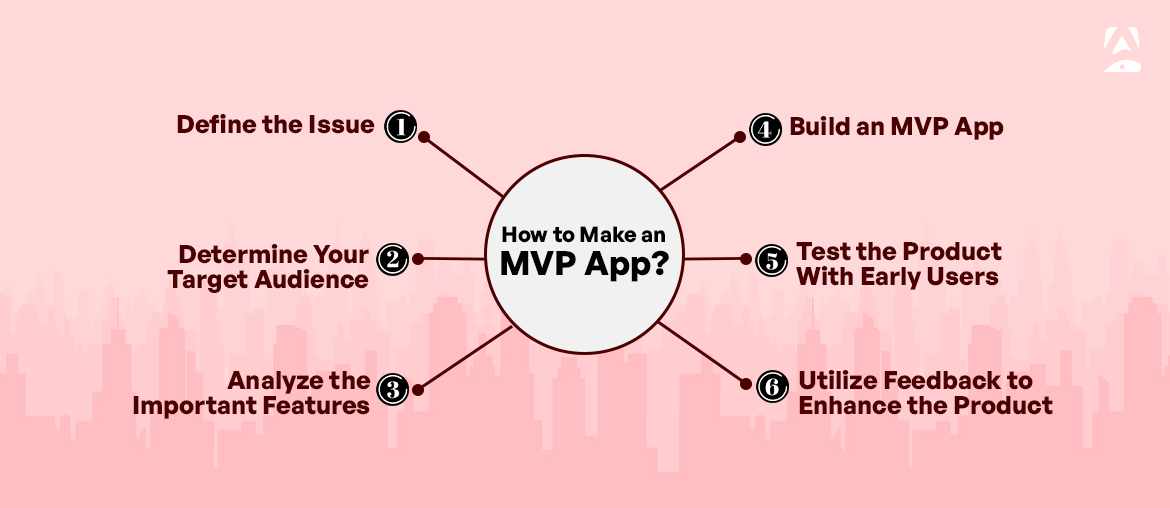
Here, we will tell you each step in detail that is required to develop software in an app development company.
1. Define the Issue
First, you need to define the situation your application aims to decode to avoid developing software that no one will use. At this stage, you should sit down with your mobile application developers to examine the issue the application will solve. In addition, you should consider how consequential this problem is to the users who might use the app.
2. Determine Your Target Audience
Once you’ve described the scenario, knowing your target audience is crucial. Many developers try to create applications for everyone. However, they often face challenges because not everyone uses the same app. So, it is necessary to understand the niche group while preparing.
To understand the target audience, you just need to develop a precise persona and make it as simple as possible. Your buyer persona must include attributes such as age, income, job title, location, education level, interests, and other relevant factors. This knowledge will help you prioritize which functions to launch first.
3. Analyze the Important Features
After clarifying the issue and knowing your target audience, you need to determine the essential features of the first product that will be released.
First, document all the potential features the desired product could have. Then, choose the ones that are just enough to make it usable. From these, you need to pick a few key features for MVP software development, consisting of one main function to test the product’s idea and the problem it aims to solve.
4. Build an MVP App
In this step, you can develop the application by deciding all the features. By doing so, you need to specify the frameworks, programming languages, and tools you’ll require. Then, you can begin the development process. Moreover, you don’t worry about making it perfect. You just need to focus on building a usable product. In fact, your goal is to create a working product quickly to test if your idea is viable and functional.
Essential Features of MVP Android App Development
- It must offer enough value that early users want to try or even purchase the product. While the MVP should efficiently and effectively contain essential features, it still needs to be usable enough to give early users a reason to try it.
- It should show enough potential benefits to keep most early adopters interested. Even though the MVP has the necessary features, it must give early adopters hope that the product will enhance over time.
- This needs to offer a feedback loop to guide future development. The first features you release should make it easy for early adopters to share their feedback on the product experience.
5. Test the Product With Early Users
Once you’ve created a usable product, the following step is to try it with early users. Find individuals who match your buyer persona and ask them to test your product. If you can, reach them through email, social media, or in person. The aim is to have adequate users try the product and give feedback.
Make it easy for users to share their honest feedback. If necessary, send follow-up emails with a form for them to complete. Moreover, your goal is to gather feedback that will help you determine whether your idea meets users’ needs or needs to be modified.
6. Utilize Feedback to Enhance the Product
After receiving feedback from actual users on your product, you need to gather it and determine the best way to implement it in the bespoke MVP development company. Start by focusing on feedback about how well the product solves the user’s problem. However, this will help you decide whether to keep moving forward with the same idea or pivot to something else. If the feedback is positive, you can determine which features to add next based on what users have said.
You may not be competent to set everything at once. Identify the most important issues that affect the user experience and prioritize those. In other words, you may need to remove features that aren’t useful.
Fixing these issues quickly, without spending too much time on them. Afterwards, release one feature at a time and keep improving the product as users continue to use it. This process should be ongoing until the product is ready for the wider audience.
Skills Required to Become Professional in Building MVP Development
The upcoming section will elaborate on the technical and hard skills required to become a professional in developing software.
- Languages: Should have commands in various languages, like JavaScript, Python, Ruby, or Java, depending on the project.
- Web Development: Understanding of web frameworks (e.g., Angular for frontend, React, Ruby, Django on Rails for backend).
- Mobile Development: Skills in iOS (Swift) or Android (Java/Kotlin) if building a mobile app. Moreover, it is required to have experience in Flutter App Development which will help you develop the application.
- UI Design: Developing user-friendly, visually appealing interfaces.
- UX Design: Understanding user behavior and designing intuitive user flows for a great experience.
- Database Systems: Knowledge of systems like PostgreSQL, MySQL, or MongoDB to store and manage data.
- Frontend: Building the client-side interface and user experience.
- Backend: Handling server-side development, APIs, and databases.
- Version Control: Using tools like Git to manage and track changes in the code.
- API Integration: Combining several third-party services or APIs to enrich functionality.
- Agile Methodology: Comprehending some agile practices such as Kanban or Scrum for adaptable, iterative project management.
- Quality and Testing Assurance: Assuring the MVP works truly through integration, unit, and user testing.
- Collaboration and Communication: Strong communication skills to collaborate well with team stakeholders, members, and users.
- Business Understanding: Knowledge of the market, user needs, and trends to build a relevant MVP.
These skills are essential to ensure the MVP is well-developed, functional and meets user expectations.
MVP Software Development Service
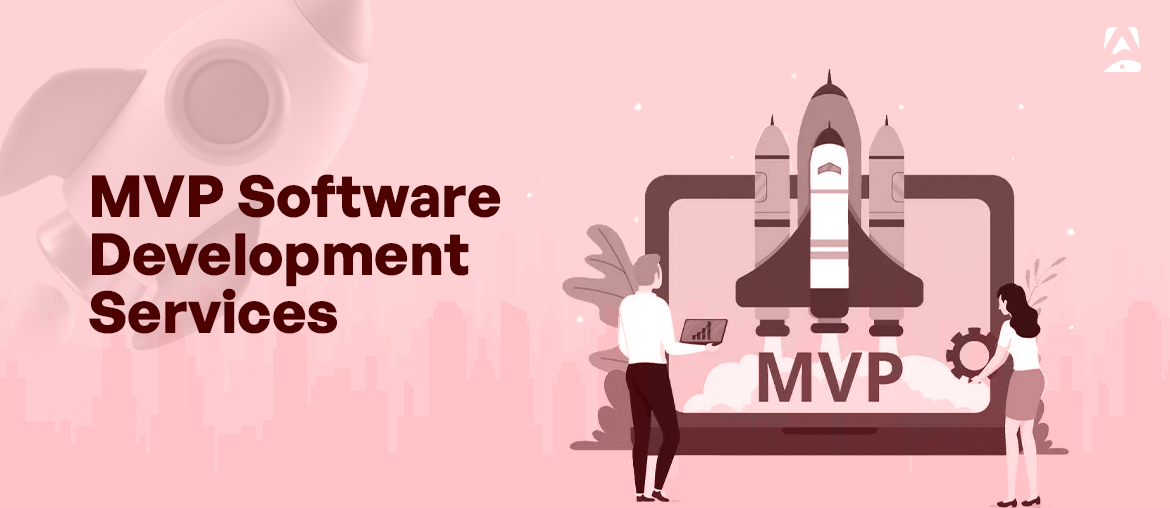
We will discuss various services to assist users in understanding the concept more thoroughly.
- Collecting Requirements and Planning: Understanding the project’s requirements and planning the building process.
- Market Research: Analyzing the market to know what’s required in the industry.
- Choosing the Right Tech Stack: Determining the most suitable technologies to create the project effectively.
- Testing and Quality Assurance: Examine the product to make sure that there are no errors and works as expected.
- Feedback and Launch: Compiles feedback and makes improvements before releasing the project.
MVP App Development Cost
For building an MVP application, its cost can vary between $15,000 and $150,000. Moreover, the actual price depends on numerous factors, such as:
- App Complexity: If the application and its features are too compound, its cost will be high.
- Development Team: The department’s location will also affect the price. For example:
* An in-house team might cost between $132,000 and $155,000.
* A local team could range from $160,000 to $180,000.
- Development Time: The longer it takes to build the app, the higher the cost.
Concluding Words
Here, we have reached the end of this guide. We have gone through multiple concepts of MVP software development. This clarifies that companies can easily gather feedback from early users. Moreover, it allows them to make better improvements on the basis of actual use. By understanding all the primary concepts, you are good to go to become a professional developer.
If you’re ready to take on new challenges, consider investing in Appikr Labs, a trusted name in mobile app development. Get ready to transform your ideas into reality and develop visionary MVP software that can help the industry.
Frequently Asked Questions
1. What does MVP mean in Agile development?
Ans. MVP, or minimum viable product, is the primary version of a product in Agile development used to test an idea and gather feedback.
2. Explain MVP example.
Ans. One of the best examples is Amazon. In the early 1990s, Jeff Bezos established the website as an online bookstore.
3. Differentiate between Agile and Scrum.
Ans. The primary difference between Agile and Scrum is that Agile is a comprehensive technique for project management on the basis of core values principles and values. On the other hand, Scrum is a typical method within Agile utilized to manage and guide projects.

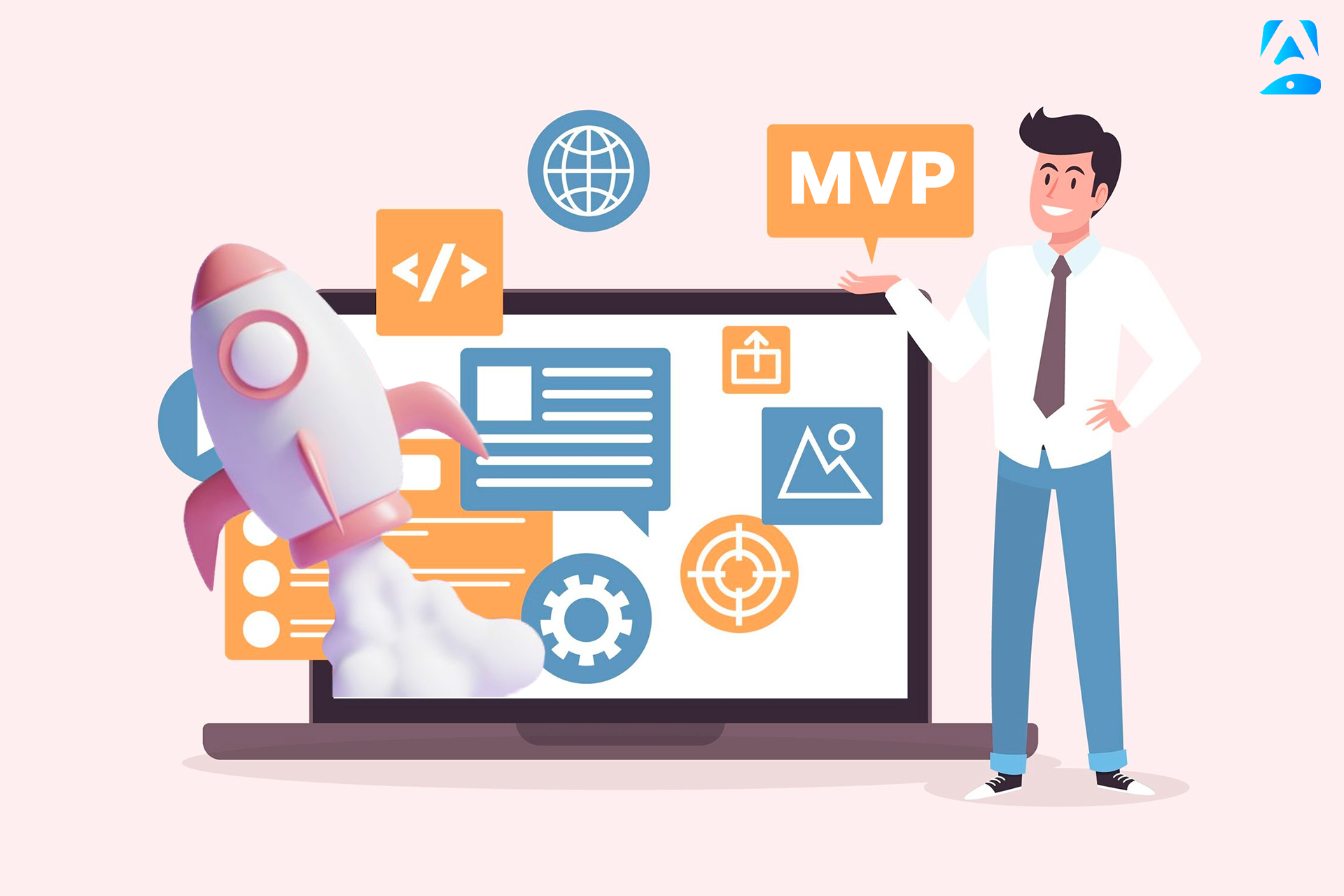

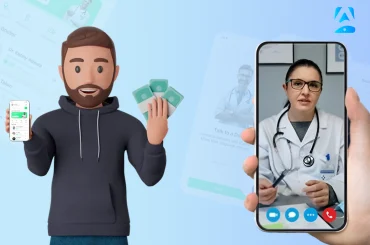
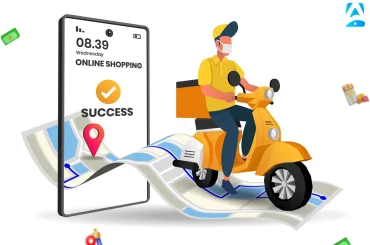
![20+ Business Ideas In Bahrain [2025] 20+ Business Ideas In Bahrain [2025]](https://www.appikr.com/blog/wp-content/uploads/2025/01/business-370x245.jpg)
